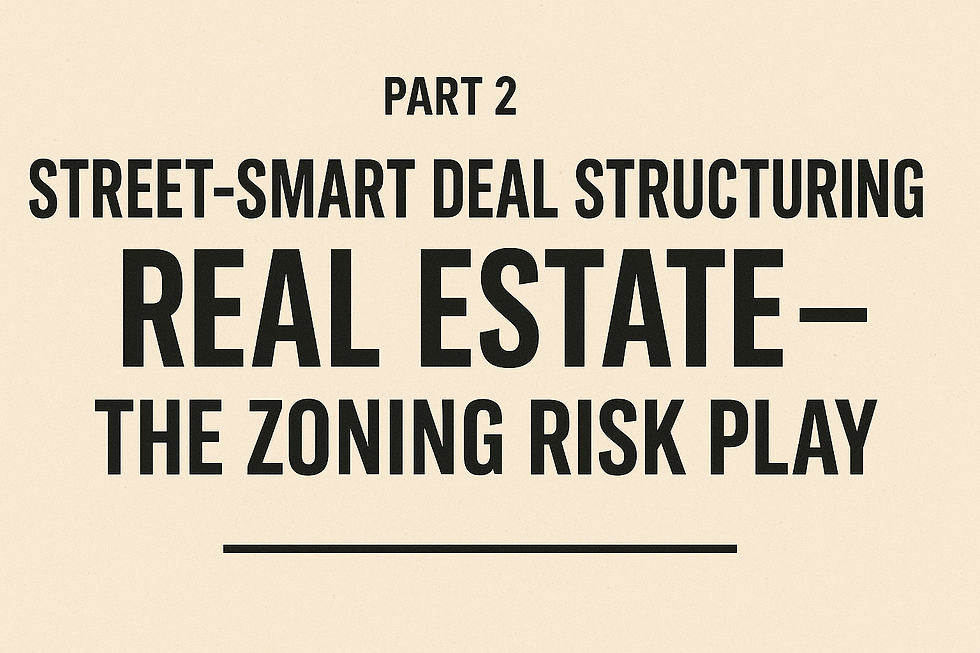Don’t Trust Your Partner — Structure It So You Don’t Have To
- Wissam Elgamal
- Jun 7
- 3 min read
A colleague recently asked me, “Who do you trust enough to go into business with?”
Good question — but I’ve got a better one:What if you could eliminate trust from the equation entirely?
Let’s assume you like this person. You get along, good gut feeling. Great.But don’t go gaga over them. That’s not a strategy — it’s a crush.
This isn’t about feelings. It’s about structure, leverage, and risk management.

The Partnership Illusion
People love the idea of a partnership.They think:
“If we team up, we’ll double our output.”1 (You) + 1 (Them) = 2 (Awesome!)
Wrong.What you’re really doing is adding:
Risk
Friction
Emotional Energy Tax™ (article coming soon)
So if your net result is just “2,” it’s not worth it.You could’ve stayed solo and had the same output without the drama.
For it to be worth it, the partnership has to produce significantly more than the sum of its parts. Like 3x, 5x, 10x more.
Otherwise? Stay solo and hire what you need.
When It Might Make Sense
Here’s the exception: asymmetrical dependency.
You’ve got product. They’ve got distribution.You’ve got code. They’ve got customers.You literally cannot move forward without them.
Okay. But even then — ask yourself this first:
Can I just pay them instead of partnering?
The Trustless Partnership Framework
If you must partner, here’s how to do it smart:
1. Keep the Touchpoints Small
Fewer shared systems, fewer shared responsibilities, fewer co-owned decisions.You want to untangle things in hours, not months.
2. Create an Easy Out
Draft a clean, no-drama exit plan from Day 1.Example:
You’re at “1” before partnership.
During the honeymoon, things go great — you hit “3”.
Then it crashes. You exit and land at “2”.
You still win.Forget what could’ve been. That’s fantasy accounting. Look at where you are.
3. Set a Realistic Non-Compete
Not aggressive. Just enough to protect clients, systems, and IP.So if they leave, they’re not cannibalizing your work.
4. Protect What You Brought In
If you had 300 clients before the partnership — those are yours.Never give a partner control over what you already built.
If your partner brings in 1,000 clients and walks away with 800?Congrats — you still have 200 more than before. That’s a win.
5. Don’t Get Emotional When It Ends
Every partnership has a honeymoon period.People confuse that with success. Then things get real — and messy.
If you structured it right, you should be able to walk away calmly.Let others scream “what could’ve been.” You’ll be counting gains.
How to Measure Success
Here’s the math that matters:
Inputs:How much time and energy to build the partnership?How much to maintain it?
Outputs:Are you producing more? Or just talking more?
Friction factor:Are you stuck in long, emotional, non-productive conversations?
If it’s not ROI-positive in both time and money, it’s not a partnership — it’s a tax.
Bonus Rule: Get a Damn Good Lawyer
And no — not just “a lawyer.”You need one who understands business reality, not just legal theory.
The kind who’ll say:
“Here’s how this actually plays out — not what the contract says, but what it costs to enforce it.”
Because here’s the deal:
A contract that costs $50K to enforce is just an expensive PDF.
Practical advice > Legal advice.
Cost-loss analysis beats legal posturing every time.
You don’t care if you’re “right” in court. You care if you’re whole when it’s over.
Final Thought
Partnerships can work.But structure beats trust every time.Design it so if it ends, you’re still better off than when you started.
Because the real power move isn’t trusting people —It’s building a system where you don’t have to.
Let me know if you want a LinkedIn post version, a punchy teaser, or a killer headline graphic.









Comments